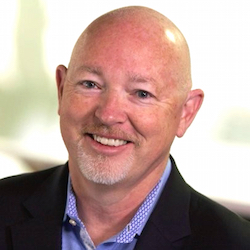
Last year, a piece I wrote regarding substance use and abuse in the senior population was published here on McKnight’s Senior Living. The response to that article was overwhelming, and it was clear that it touched a nerve.
One of the people who reached out to me was Rick Shamberg, a managing partner at Cerulean Partners, a senior investment firm in Chicago. Rick is also the owner of Gray Wolf Ranch, a nationally renowned treatment center located outside Seattle.
Rick and I had some great conversations about substance use in the senior population, and I asked him if he’d be willing to do an interview as a follow-up to my previous piece. Rick gladly obliged my request, and I think you’ll find his insights into senior addiction eye-opening.
Wayne: How did you become interested in substance abuse issues among older adults?
Rick: I have a personal connection to the issues relating to substance abuse and, as a senior living executive, those issues — along with the prevalence of mental and behavioral health incidences — always have been top-of-mind for me. I fervently believe that residents of senior living communities and seniors staying in their homes are vulnerable, even pre-disposed, to these heartbreaking illnesses.
Wayne: Today, many communities include bars and happy hours, and with the legalization of marijuana, previously controlled substances are much easier to obtain. Do you think societal changes are making substance abuse more prevalent in older adults?
Rick: I’m of the opinion that our society has always made alcohol consumption a centerpiece of socialization and that the adoption of laws legalizing recreational use of marijuana is contributing to the growing use and dependence on that substance among all segments of the population, including seniors. The well-documented opioid epidemic and the widespread use of other prescription medications make seniors particularly susceptible to abuse and addiction.
Older adults are more likely to be living alone, not working and have abundant free time, all of which may contribute to their growing abuse of alcohol and other drugs and make them less likely to seek support for the changes in behavior that occur.
Wayne: Can you share what substances older adults are most likely to abuse?
Rick: Alcohol, marijuana, opioids and tranquilizers are at the top of the list, but there are others. According to the National Council on Alcoholism and Drug Dependence, nearly 17 million tranquilizers are prescribed for older adults each year. Although people aged 65 or more years represent just 13% of the population, they account for 30% of all medications prescribed annually, according to the NCADD.
Wayne: Many aging services providers believe they are unequipped to deal with a substance abuse issue in their community. Often, problematic residents are removed instead of treated. Can you provide some resources for communities that would help educate them on handling these situations better?
Rick: This may be the single most important factor in changing attitudes and preparing for the exponential increases in drug and alcohol addiction. Caregivers, family members, friends and even physicians tend to attribute the observed changes to things other than use and abuse of substances.
We need widespread education and training for front-line staff at communities and public promotion of signs and symptoms. We cannot address a problem about which we are unaware or in denial. This is a troubling public policy, public health, social and economic problem, and with the coming “silver wave,” it will become an epidemic if it is not addressed responsibly.
Wayne: Within a community, who should be the point person as it relates to substance abuse? Nurses? Social workers? Someone else?
Rick: Anyone who is working with a senior should be able to recognize the signs of addiction, at least enough to notify an executive director, nurse or wellness director who then can address the issue with family and other healthcare providers and determine how best to seek help.
Wayne: What tips can you give for providers about speaking with families about a loved one’s substance abuse?
Rick: Family members who are emotionally connected and most affected often times have the most difficult time addressing these issues with a loved one. The families themselves often have been affected by the change of behavior and even may have underlying issues themselves. In short, they may often be unreceptive.
Addiction is a “family disease” and, hence, best addressed with the help of a professional or expert trained in family systems and chemical dependency. Each community should identify outside resources to bring in and extricate themselves from playing intermediary between family and residents.


